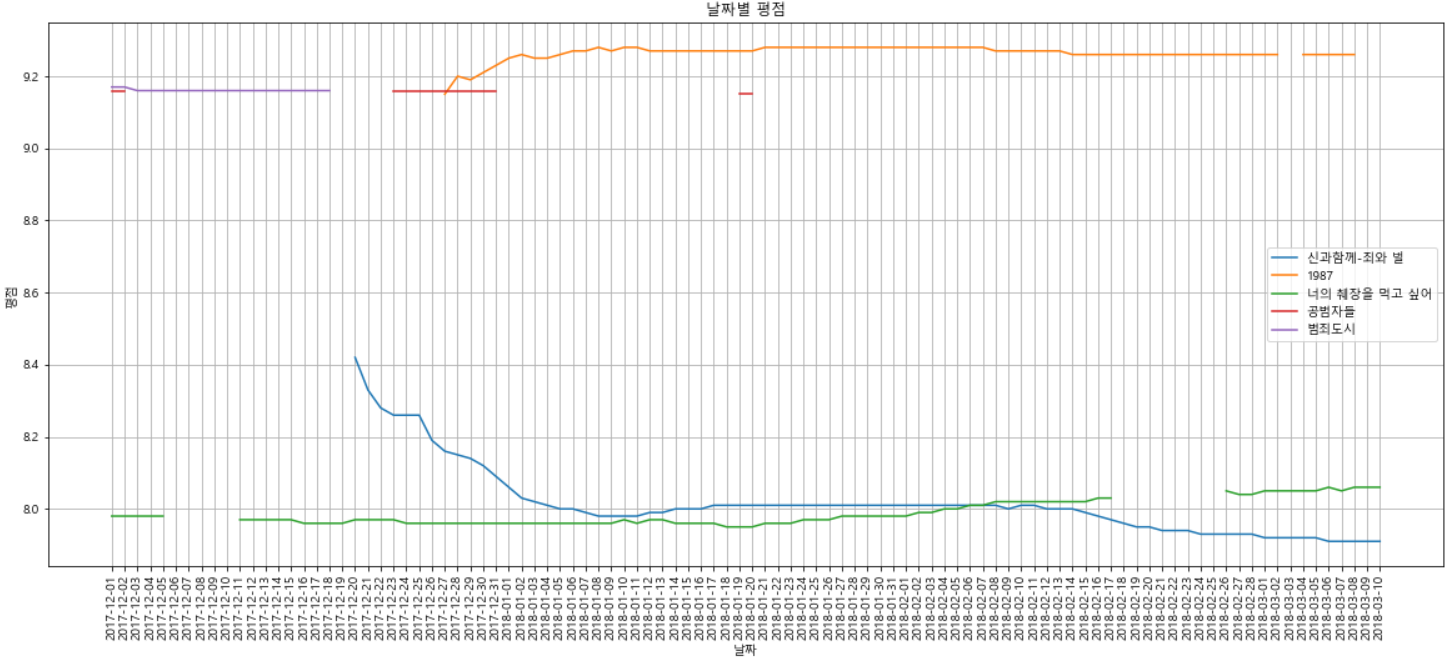◼import
import pandas as pd
import numpy as np
import matplotlib.pyplot as plt
from matplotlib import rc
%matplotlib inline
plt.rcParams["axes.unicode_minus"] = False
rc('font', family='Malgun Gothic')
from bs4 import BeautifulSoup
from urllib.request import urlopen
from tqdm import notebook
◼개요
- 네이버 영화 메인 페이지 링크
- 영화랭킹 평점순(현재상영영화) 링크
◼데이터 분석 시작
url = "https://movie.naver.com/movie/sdb/rank/rmovie.naver?sel=cur&date=20180315"
page = urlopen(url)
soup = BeautifulSoup(page, "html.parser")
print(soup.prettify())

- 개발자 도구를 활용해 태그 확인
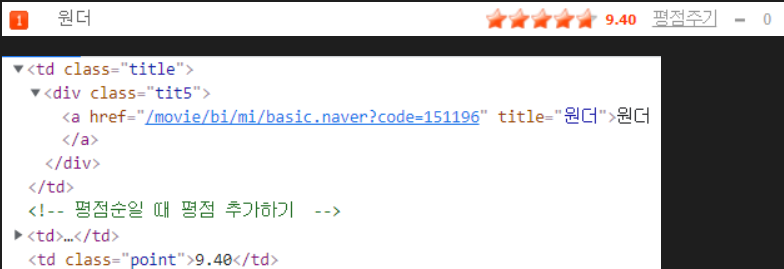
- 영화 제목 :
<td class = "title"> > <div class = "tit5"> > <a>
- 영화 평점 :
<td class = "point">
- 영화 제목 확인
len(soup.find_all("div", class_="tit5")), soup.find_all("div", class_="tit5")[:5]

soup.find_all("div", class_="tit5")[0].a
soup.find_all("div", class_="tit5")[0].a.string


len(soup.find_all("td", class_="point")), soup.find_all("td", class_="point")[:5]

- 매 페이지마다 영화의 수가 다르므로 수를 확인하고 for문을 사용한다.
end = len(soup.find_all('div', class_='tit5'))
movie_name = [soup.find_all('div', class_='tit5')[n].a.string for n in range(0, end)]
len(movie_name), movie_name[:5]
end = len(soup.find_all('td', class_='point'))
movie_point = [soup.find_all('td', class_='point')[n].string for n in range(0, end)]
len(movie_point), movie_point[:5]


◼데이터 확보
- 여러 날짜의 데이터 확보
pd.date_range : 원하는 날짜를 얻을 수 있다.
date = pd.date_range("2017.12.01", periods=100, freq="D")
strftime("형식") : 날짜 데이터 출력 변경
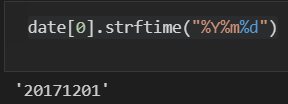
import time
movie_date = []
movie_name = []
movie_point = []
for today in notebook.tqdm(date):
html = "https://movie.naver.com/movie/sdb/rank/rmovie.naver?sel=cur&date={day}"
response = urlopen(html.format(day=today.strftime("%Y%m%d")))
soup = BeautifulSoup(response, "html.parser")
end = len(soup.find_all("td", class_='point'))
movie_date.extend([today for n in range(0, end)])
movie_name.extend([soup.find_all("div", class_='tit5')[n].a.string for n in range(0, end)])
movie_point.extend([soup.find_all("td", class_='point')[n].string for n in range(0, end)])
time.sleep(0.5)
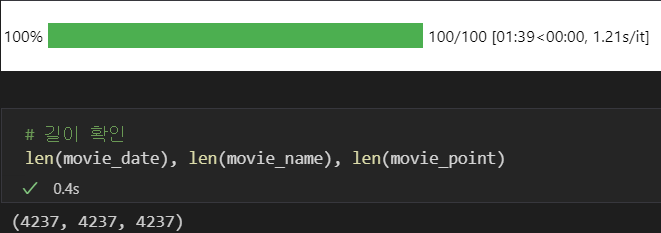
movie = pd.DataFrame({
"date" : movie_date,
"name" : movie_name,
'point' : movie_point}
)
movie.head()
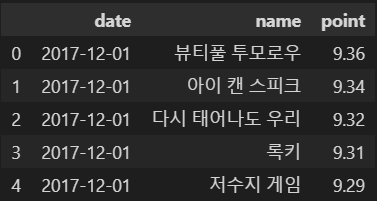
- 데이터 프레임 확인
- point가 object임을 확임
astype : 타입 변경
movie["point"] = movie["point"].astype(float)
movie.info()
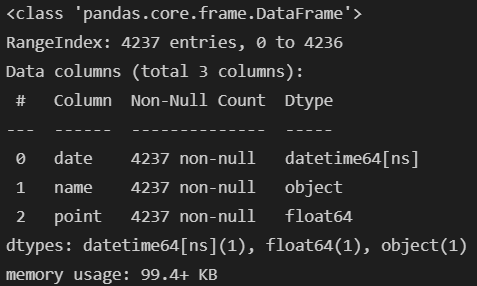
movie.to_csv("../data/03/03. naver_movie_raw_data.csv", sep=',', encoding="utf-8")
◼데이터 정리 및 시각화
movie = pd.read_csv("../data/03. naver_movie_raw_data.csv", encoding='utf-8', index_col=0)
movie.head()
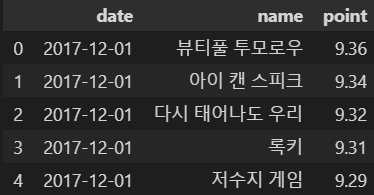
- 영화 이름을 기준으로 데이터 정리
- pivot_table
- 영화 이름 기준, 평점 합산
movie_unique = pd.pivot_table(movie, index=["name"], aggfunc=np.sum)
movie_best = movie_unique.sort_values(by="point", ascending=False)
movie_best.head(10)
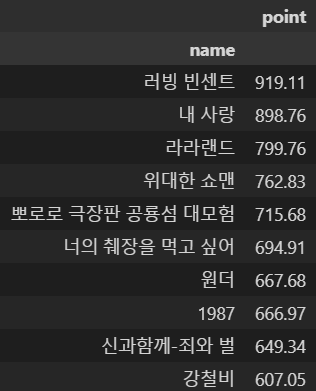
query() : DataFrame 검색 명령
tmp = movie.query('name==["강철비"]')
tmp
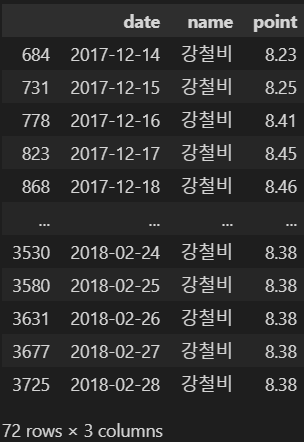
plt.figure(figsize=(20, 8))
plt.plot(tmp['date'], tmp.get('point'))
plt.title("날짜별 평점")
plt.xlabel('날짜')
plt.ylabel('평점')
plt.xticks(rotation="vertical")
plt.legend(labels=["평점 추이"], loc="best")
plt.grid(True)
plt.show()
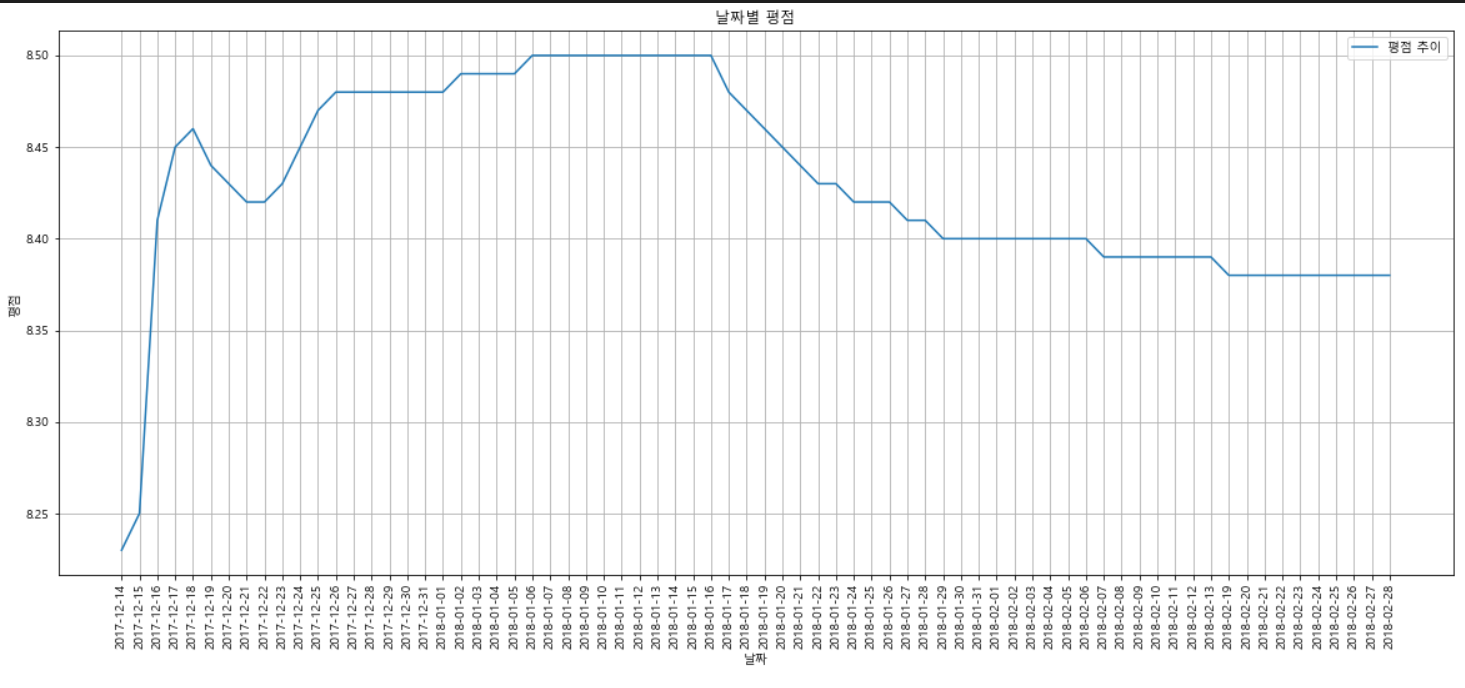
- 평점 합계 top10
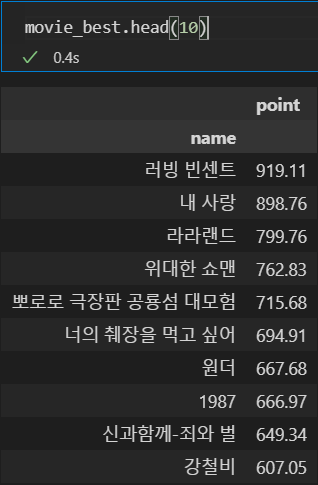
- 평점 합계 worst 10
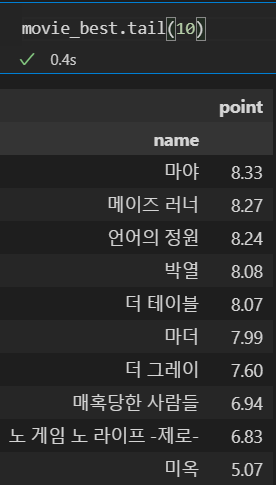
- 날짜별 기준으로 정렬
- pivot_table
- 날짜 기준, 영화 이름 컬럼, 평점 값
movie_pivot = pd.pivot_table(movie, index=["date"], columns=["name"], values=["point"])
movie_pivot.head(2)

movie_pivot.to_excel("../data/03/03. movie_pivot.xlsx")
target_col = ["신과함께-죄와 벌", "1987", "너의 췌장을 먹고 싶어", "공범자들", "범죄도시"]
plt.figure(figsize=(20, 8))
plt.title("날짜별 평점")
plt.xlabel('날짜')
plt.ylabel('평점')
plt.plot(movie_pivot[target_col])
plt.xticks(rotation="vertical")
plt.legend(labels=target_col, loc="best")
plt.grid(True)
plt.tick_params(bottom="off", labelbottom="off")
plt.show()
